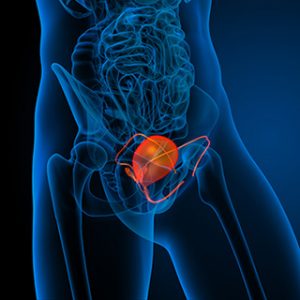What is a Bladder?
 The human urinary bladder is located at the lower abdomen or at the pelvis floor. In males, the base of the bladder lies between the rectum and the pubic symphysis. In females, the bladder sits inferior to the uterus and anterior to the vagina; thus, its maximum capacity is lower than in males. It is a hollow balloon shaped organ, mostly composed of muscles. The shape and size of the bladder will depend on the amount of liquid it holds. Its shape will be tetrahedral within the pelvis when empty and become oval and expand into the lower abdomen when it contains liquid. The innermost lining of the bladder is coated with mucous, making it impervious to urine.
The human urinary bladder is located at the lower abdomen or at the pelvis floor. In males, the base of the bladder lies between the rectum and the pubic symphysis. In females, the bladder sits inferior to the uterus and anterior to the vagina; thus, its maximum capacity is lower than in males. It is a hollow balloon shaped organ, mostly composed of muscles. The shape and size of the bladder will depend on the amount of liquid it holds. Its shape will be tetrahedral within the pelvis when empty and become oval and expand into the lower abdomen when it contains liquid. The innermost lining of the bladder is coated with mucous, making it impervious to urine.
What is the Function of a Bladder?
The bladder’s basic function serves as storage for excretion of urine and its release through the urethra. The urine produced by the kidneys enters the bladder through two tubes called ureters, one from each kidney. Nerves in the bladder signal your brain when it is time to urinate. Another term for the urge to urinate is called micturition. The desire to micturate usually begins when the bladder has about 400 milliliters of urine, but this can be easily delayed. The sensation intensifies when the amount reaches 600–800 milliliters, which is equivalent to a pressure of 100 millimeters of water. Thus, urine needs to be released to keep the pressure inside the bladder at a minimum.
Common bladder diseases and conditions:
- Bladder cancer
- Bed-wetting
- Urinary incontinence (loss of bladder control)
- Urinary retention (bladder-emptying problems)
- Retrograde ejaculation (bladder muscles don’t work properly and causes male ejaculation to go into the bladder
